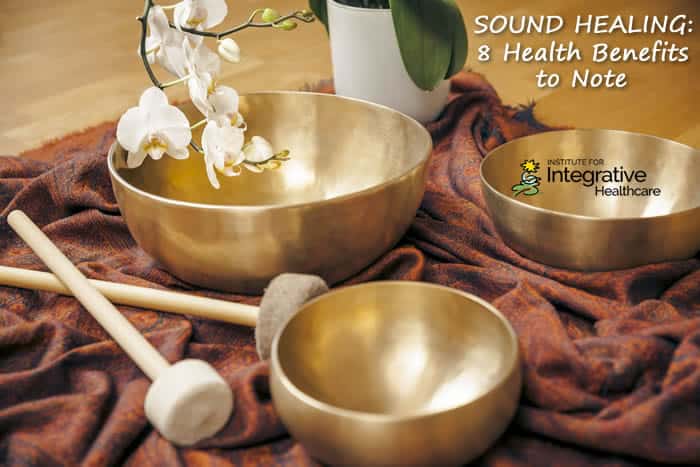

Throughout history, many cultures have used sound and vibration for healing. Shamans used chanting and drumming to heal people with various complaints, while in ancient Greece, Egypt and India – sound, song, chanting, and music was used for healing purposes for infertility, rheumatic pain, and depression among other conditions. Egyptian papyri over 2,600 years old refer to incantations and vocalizations of vowels for healing purposes.
Most of us know that sound can be powerful. Anyone who has endured hours listening to a crying, screaming baby or suffered through a bout of angry yelling knows that these sounds can instantly make our adrenaline spike and the fight-or-flight instinct kick in. Most of us have also experienced the calm that comes over us when we listen to soothing music or sounds. Our instinctual reactions to different sounds and types of music happen for a reason; different sounds occur at different vibrations and these vibrations can affect us in mighty ways.
Theory of Sound Healing
The theory behind using sound for healing purposes is that the human body is made up of cells, all of which have an energy field that can be impacted by the vibration and waves of sounds. The human body as a whole also has its own electromagnetic frequency, which can be affected by the sound waves. By using different frequencies, the theory is that different ailments and conditions can therefore be addressed.
8 Healing Benefits of Sound
Research has shown that sound and music are effective in treating many conditions:
- Sleep: Using classical, relaxing music, chanting, or soothing sounds have all been shown to relax people enough to improve sleep. Those who use relaxing sounds and music fall asleep faster, stay asleep longer, and wake up less.
- Stress Reduction: Stress is reduced when appropriately relaxing sounds and music are played at low to moderate volume throughout the day. Breath slows down and heart rates are reduced as the body relaxes. This can be especially potent for those who are suffering from hypertension and cardiovascular conditions.
- Reduced Fatigue: Fatigue has been shown to be reduced both as a result of better sleep quality, but also from stress reduction. The body fatigues and cognitive function is reduced when under long-term, chronic stress. Listening to relaxing sounds and music can significantly reduce this fatigue.
- Pain: It is believed that, because music is perceived through our senses, specifically through our nervous systems, those sensory signals act to block the slower moving pain signals, reducing our perceptions of pain. Studies have confirmed that pain is reduced when sound and music is used.
- Improved Endocrine Function: Endocrine function is improved overall, primarily as a result of the reduction in stress. When we are under stress, our body undergoes many changes in the endocrine system as adrenaline and cortisol are released. These neurochemicals greatly impact the way our other hormones function, throwing our endocrine system into disarray. Reducing stress can bring significant improvements to our endocrine systems.
- Depression and Anxiety: Sound and music can greatly reduce symptoms of depression and anxiety. Several factors work together here to create a significant improvement in these conditions: stress is reduced, pain is lessened, and sleep is improved. All of these factors work to improve symptoms of depression and reduce anxiety.
- Restore Cellular Activity: Studies have shown that using sound and music therapies can actually help to restore cellular function, improving the function of the membrane walls and biologic activities.
- Reprogram DNA: Research has indicated that specific sound waves can even be used to stimulate DNA to repair itself, essentially reprograming the DNA sequencing. The potential for medical treatments with this is astounding, but research is still in the early stages.
Sound Healing and Massage Therapy
Sound healing as a modality is still in the early stages and is primarily used in the complementary and alternative healing arenas. In the massage therapy industry, we have long known that soft, relaxing music, chanting, and sounds can enhance the relaxation response we are seeking for our clients during the massage therapy session. Other alternative modality practitioners such as those in acupuncture, Reiki, chiropractic and even psychotherapy have also found the use of relaxing sounds and music can enhance their services by helping to bring the client into balance and relaxation even before the practitioner begins the treatment.
Many massage therapists, especially those who offer Reiki, Polarity Therapy or other types of energy work find sound therapy to be especially useful. The use of Tibetan singing bowls, glass or metal bowls that are designed to emit specific musical notes, is becoming more and more common. So, too, the use of different chanting and specific vocalizations are being used more and more to enhance treatment sessions. For most massage therapists, being aware of the power of music and sound is important as we choose music to enhance the relaxation qualities of our massage sessions.
The addition of relaxing sounds and music to our massage therapy practices can greatly increase our effectiveness in bringing about a state of calm in our clients. It is amazing that a simple thing like music can have such a powerful impact, giving our clients – and us – a feeling of calm and relaxation even before the therapeutic massage session begins.











